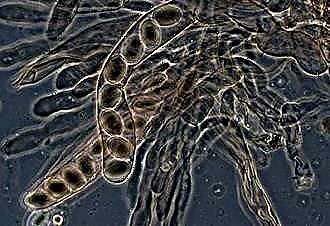Often, even in the neonatal period, doctors detect a heart murmur when listening. Having performed an ultrasound of the chest, specialists confirm an additional trabecula in the left ventricle. This pathology occurs in every 30 people. Therefore, those who have been diagnosed with this need to know whether the pathology is dangerous, whether it needs treatment, and what methods are used to restore cardiac functionality.
Reasons for the appearance
An additional trabecula in the left ventricle is a pathology related to anomalies in the development of the heart. By itself, it does not pose a health hazard, because it does not lead to deformation of the heart, does not cause disruption of its performance and is not a defect.
The trabecula in the left ventricular cavity is a thread that connects the muscle tissue of the left ventricle of the heart with a valve. Most often it is found in newborns, because it can only be congenital.
This topic has been discussed many times by famous scientists and professors of medical universities. Also, numerous studies of children and adults were carried out, as a result of which additional trabeculae in the left ventricle were attributed to pathologies transmitted genetically from one parent to a child. If the mother of the baby has an additional chord inside the heart, then the probability of her giving birth to children with such a pathology is 50%.
Healthy mothers also have children with an additional intracardiac notochord. This may be due to the following factors:
- Radiation exposure to the body of a pregnant woman.

- Alcohol abuse, smoking and drug use during pregnancy.
- Living in an area with a polluted environment.
- Regular nervous overstrain, depressive conditions.
- Heavy physical exertion.
The additional cardiac chords recorded by researchers are usually classified. This is influenced by the thickness, the number of connecting threads, their location inside the left ventricle. Therefore, an additional trabecula of the left ventricle in a child may be:
- Multiple, single.
- Muscular, fibrous, mixed.
- Apical, apex, basal.
- Diagonal longitudinal and transverse.
These factors make it possible to assess the malignancy of the trabecula, but only in rare cases can it be a threat to health.
Symptoms
If the disease is found in a benign form, then it will not cause pain or discomfort, so the child can live like other healthy children. However, with malignant trabeculae or complications, the following symptoms may appear:
- Pain in the region of the heart, tachycardia... In infancy, children do not feel discomfort, but when they begin to grow up, the internal organs increase in size, and the child can feel the force of the heartbeat and pain in the chest space, manifested as a result of physical exertion.
- Decreased physical activity and chronic fatigue... They arise as a result of the development of an additional chord. This symptom is the most common.
- Disorders in the functioning of the digestive system.
- Musculoskeletal disorders are a complication provoked by trabeculae. At the same time, changes in the position and shape of the limbs are visually noticeable. As a result, the child may experience difficulty in physical activity.
If the trabecula in the left ventricle was not previously fixed, but the symptoms began to appear, you should consult a specialist and undergo an examination, which consists in a doctor's examination, an ultrasound scan, an electrocardiogram or a Holter study, which allows you to assess the current functionality of the heart. As a result, the child will be prescribed treatment and other measures to prevent complications from joining.
Treatment
Usually, an additional trabecula in the left ventricle does not need to be treated, but if pain or discomfort is present, it is necessary.
To support a person with an additional chord, the following measures are used:
- A complex of vitamins is prescribed, which the patient takes in the form of injections, capsules or tablets for 1-3 months. They allow the heart to return to normal performance and improve the patient's well-being.
- Prescribed drugs containing magnesium and potassium. They have a positive effect on the functionality of blood vessels and heart. It is not recommended to take these drugs without prescribing a doctor, especially for children. An incorrectly calculated dosage can provoke a negative effect, which will affect the well-being and condition of the patient.
- Prescribe drugs that stimulate metabolic processes. With their help, cardiac performance improves, because these medications improve appetite and myocardial functionality.
Having found this disease in a child in a benign or malignant form, it is necessary to undergo a medical examination annually and monitor the course of the disease. This will prevent complications and at the same time lead an active lifestyle.

Dealing with complications
Despite the fact that trabeculae in the left ventricular cavity do not pose a threat to the child's health, with an improper lifestyle, they can go from a benign form (painless) to a malignant one (requiring regular medication). Therefore, when a disease is detected, doctors immediately determine the prohibitions for the patient. These include:
- Extreme sports, sports career, active gymnastics, overly active dancing, scuba diving.
- Unauthorized taking of medicines. Each drug (even not related to heart disease), its dosage, must be approved by a specialist. Many pharmacological drugs affect intravascular pressure, increase heart rate, which is unacceptable for this kind of pathology.
- Intense physical and emotional stress.
In addition, the doctor draws up a certificate prohibiting the child from participating in school physical education competitions and exempts from certain types of exercises. He develops such a complex of activities so that the additional trabecula of the left ventricle in the child is trained and does not bother him in the future. This shows:
- Easy short run.

- Walking the tightrope.
- Drilling Exercises.
- Jumping.
- Gymnastic procedures on a skipping rope, Swedish wall, bench, with a ball.
In addition to all this, it will be useful for a child with an additional chord to attend massage courses, eat right, go to slow dances, rest more often and not get into stressful situations.
The best way to give birth to a healthy baby is to abandon factors that can negatively affect the development of the fetus (for the entire period of pregnancy). If the expectant mother has this disease, it is recommended to take it much more seriously. This will reduce the risk of an extra chord. If a child has already been born with such a pathology, you need to carefully monitor the baby's well-being and listen to every medical recommendation so that the child grows and develops on a par with his peers.





